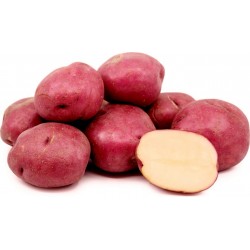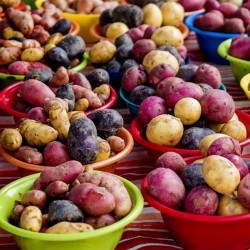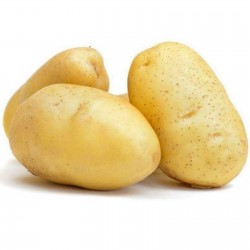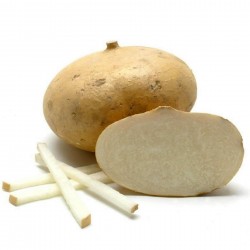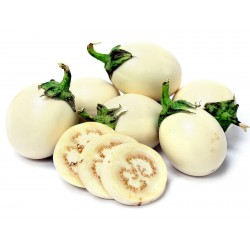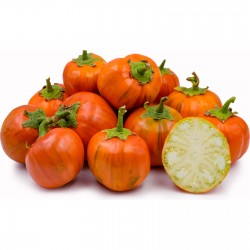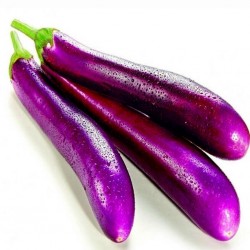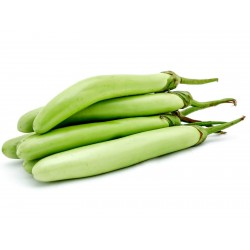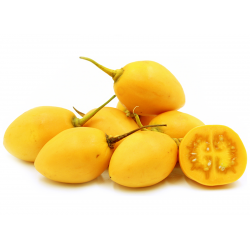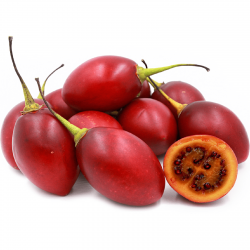
Variety from Peru

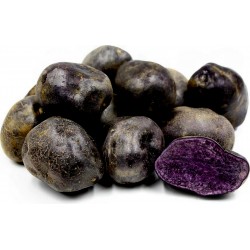
Peru Mor Patates Tohumları
Fiyat
€2,95
SKU: P 441
Seeds Gallery Com,
5/
5
<!DOCTYPE html>
<html>
<head>
<meta http-equiv="Content-Type" content="text/html; charset=UTF-8" />
</head>
<body>
<h2><strong>Peru Mor Patates Tohumları</strong></h2>
<h2><span style="color: #ff0000;"><strong>Fiyat 5 veya 10 mor tohumluk patates içindir.</strong></span></h2>
<p>Küçük ve küçük gibi gönderiyoruz, böylece herhangi bir Posta Kutusuna teslim edilebilir. Sıradan bir çeşidin tadı ve dokusuna sahiptir, ancak pişirme sırasında rengini koruyan canlı mor ete sahiptir. Yüksek antosiyanin antioksidanları, sizin için de daha iyidir. Ezme, pişirme, kızartma ve mikrodalgada pişirmenin yanı sıra muhteşem cips ve Pommes Frites yapmak için ideal!</p>
<p>If you’re a spud lover but stopped eating potatoes due to their reputation of causing weight gain, you may be in luck. Studies show it could be the potato you choose in addition to how the potato is prepared that make a difference. What about french fries? Well, those fries are six times more likely to cause weight gain if enjoyed too often, and besides, the super high temperatures they’re cooked at cause the loss of any possible nutrients, so why bother? And if you think adding all those delicious fatty toppings is the way to go, think again. Instead, opt for purple potatoes.</p>
<p>Purple potatoes are <strong>high-antioxidant foods</strong> that are eye-catching since the skin and the flesh are both purple, making them a beautiful adornment to any plate. But it’s not just the color that’s appealing. Purple potatoes offer a host of awesome benefits from working as a healthy food-coloring agent to helping regulate blood pressure to aiding athletic performance and more.</p>
<p><strong>Benefits of Purple Potatoes</strong></p>
<ol>
<li><strong> Healthy Food-Coloring Alternative</strong></li>
</ol>
<p>Potatoes, carrots and other <strong>root vegetables</strong> are used for coloring foods and grown specifically for the natural colors industry. This is great news since they’re completely natural versus the numerous chemical <strong>food dyes linked to cancer</strong> that have been used for years.</p>
<p>The American Chemical Society documents the research that has been done regarding this food use, noting that the purple sweet potato is chock-full of anthocyanins, which provide health benefits not found in artificial food colors. Purple sweet potato anthocyanins are great for food and beverage coloring and are used in food products, such as fruit drinks, vitamin waters, ice cream and yogurt. What makes them unique goes beyond their color. They’re more stable options because they do not break down easily, making them consistent in providing color while giving little to no taste. (2)</p>
<p>Though it’s difficult to extract, it’s still a better choice given the traditional synthetic versions of colorings and the process of extraction from cochineal insects. In fact, cochineal insects feed on a certain type of cactus native to South America and Mexico, and it takes about 2,500 bugs to produce just one ounce of cochineal extract, which is often used in ice creams, yogurts, candy, beverages and the like.</p>
<ol start="2">
<li><strong> Help Lower and Regulate Blood Pressure</strong></li>
</ol>
<p>A small study presented by the American Chemical Society found that eating purple potatoes may lower blood pressure. This could be because of their effect on the capillaries and blood vessels, along with the high concentration of a phytochemical called chlorogenic acid, which has been linked to lower blood pressure found in some studies. (3) This research shows that plain purple potatoes, baked or cooked in the microwave, lowered the blood pressure of subjects that were reviewed by 3 percent to 4 percent, with no weight gain, and was likely due to the antioxidant behavior and phytonutrient density that these colorful gems exude.</p>
<p>The health benefits are similar to what the popular nutrient-rich providers <strong>broccoli</strong>, spinach and Brussels sprouts provide. And let’s not forget about the potassium they contain, which offers the regulation of blood pressure. (4) This makes purple potatoes and other similar foods excellent additions to any <strong>high blood pressure diet</strong> treatment plan.</p>
<ol start="3">
<li><strong> May Prevent Blood Clots</strong></li>
</ol>
<p><strong>Thrombosis</strong>, a formal name for blood clotting, is a leading cause of death throughout the world but can be prevented, possibly by adding a little purple potato into your diet. As noted previously, the purple potato contains chlorogenic acid. This acid has been shown to break down blood clots and inhibit the enzymatic activity of procoagulant proteins and peptides.</p>
<p>Research published in the <em>Journal of Biochemical and Molecular Toxicology</em>found that chlorogenic acid delayed the development of blood clots in mice, demonstrating the anti-thrombotic effect and making it a potential agent for the treatment of blood clots, including possible prevention.</p>
<ol start="4">
<li><strong> Jam-Packed with Antioxidants and Phytonutrients</strong></li>
</ol>
<p>The purple potato is loaded with antioxidants and disease-fighting <strong>phytonutrients</strong> that work together to offer amazing health benefits, such as reducing inflammation. One of the elements within this powerful cocktail is the anthocyanin, which is what gives the potato its brilliant purple color. But it’s the <strong>free-radical scavenging</strong> and antioxidant capabilities of the anthocyanin pigments that gives the desired health benefits.</p>
<p>Anthocyanin pigments as medicine have been a part of folk medicine for ages and used as remedies for liver dysfunction and hypertension, and much like the <strong>bilberry</strong>, anthocyanins have been linked to helping reduce the risks of eye diseases and infections. (6) </p>
<ol start="5">
<li><strong> Provides Fiber</strong></li>
</ol>
<p>Most people don’t eat enough fiber, according to numerous reports. Maybe a little purple potato can help with that problem since it’s a healthier <strong>high-fiber food</strong>. Why is fiber so important? One of the biggest reasons is it helps keep things moving along smoothly through your digestive system, which can help eliminate constipation, irregularity and discomfort.</p>
<p>Fiber is classified as soluble, which means it dissolves in water, or insoluble, which doesn’t. Potatoes contain the insoluble form as well as whole-wheat flour, wheat bran, nuts, beans, and vegetables, like cauliflower and green beans. Including both soluble and insoluble fiber promotes the best health, and purple potatoes offer a good dose of the insoluble kind to help reach the proper amount of fiber needs. (7) </p>
<ol start="6">
<li><strong> Great for Endurance Athletes and Ultra Runners</strong></li>
</ol>
<p>Another reason that insoluble fiber is so helpful is that it can provide a sort of time-released effect that helps endurance athletes sustain high energy levels for long periods of time. In fact, it’s not unusual to find potatoes at an aid station during a long-distance race.</p>
<p><em>Runner’s World</em> reports that while the ever-so famous carb-loader pasta seems to take front stage, the potato may do a better job, not only the night before but also the day of an event by providing more energy-delivering complex carbohydrates. Not only are they super easy to prepare, but they’re easy to digest — a common concern with most athletes. As well, potassium is useful for athletes of all types, in particular, due to the electrolytes it contains. The purple potato contains 341 milligrams of potassium per half cup serving, which is 10 percent of the daily recommended value. This may make the potato the perfect carb for athletes — and to help prevent <strong>low potassium</strong>. (8)</p>
<p><strong>Purple Potatoes Nutrition</strong></p>
<p>A half cup of diced, raw purple potatoes contains about: (9)</p>
<ul>
<li>52 calories</li>
<li>12 grams carbohydrates</li>
<li>1.4 grams protein</li>
<li>0.1 gram fat</li>
<li>1.3 grams fiber</li>
<li>6.5 milligrams vitamin C (11 percent DV)</li>
<li>341 milligrams potassium (10 percent DV)</li>
<li>0.1 milligrams vitamin B6 (6 percent DV)</li>
<li>45.7 milligrams phosphorus (5 percent DV)</li>
<li>0.1 milligrams copper (5 percent DV)</li>
<li>0.1 milligram manganese (5 percent DV)</li>
<li>0.1 milligram thiamine (4 percent DV)</li>
<li>0.9 milligram niacin (4 percent DV)</li>
<li>16.5 milligrams magnesium (4 percent DV)</li>
</ul>
<p><strong>How to Use Purple Potatoes</strong></p>
<p>Purple potatoes are versatile but can become a little mushy if overcooked. Even though they have a rich, vibrant violet color, their flavor is more subtle than some other potato varieties. Because of this, unlike the <strong>sweet potato</strong> that’s delicious all by itself, the purple potato is usually prepared by adding seasonings. Keep in mind that boiling or baking is the best method versus deep frying, which kills any useful nutrients. Use a little coconut or olive oil with some salt and pepper for a delightful addition to any meal.</p>
<p><strong>Purple Potato Recipes</strong></p>
<p>There are many ways to utilize purple potatoes in recipes. Try this one to start:</p>
<p><strong>Roasted Rosemary Garlic and Turmeric Purple Potatoes with Leeks</strong></p>
<p>INGREDIENTS:</p>
<ul>
<li>2 sprigs fresh rosemary (save one for garnish)</li>
<li>10 small purple potatoes</li>
<li>1 teaspoon sea salt</li>
<li>1 teaspoon pepper</li>
<li>1 teaspoon turmeric</li>
<li>1/4 cup leeks, sliced</li>
<li>2 cloves garlic, minced</li>
<li>2.5 tablespoons coconut oil</li>
</ul>
<p>DIRECTIONS:</p>
<ol>
<li>Preheat oven to 375 degrees.</li>
<li>Slice the leeks and garlic and set aside.</li>
<li>Rinse potatoes and cut in small pieces about a quarter inch thick.</li>
<li>In a bowl, mix the leeks, garlic, turmeric and potatoes with the coconut oil. It may help to melt the coconut oil first.</li>
<li>Add the sea salt, pepper and chopped rosemary, and mix well.</li>
<li>Now place the potatoes to a baking sheet lined with foil.</li>
<li>Roast for 35–45 minutes or until potatoes are soft and begin to brown.</li>
<li>Place a half cup serving as a side dish on a plate, and garnish with a small sprig of rosemary.</li>
</ol>
<p>You can also try Purple Potato Salad with Avocado-Chia Dressing recipe and use purple potatoes in most side dishes that utilize potatoes.</p>
<p><strong>History of Purple Potatoes</strong></p>
<p>The history of the purple potato goes back to what’s known as the purple Peruvian, which is an heirloom fingerling potato. Potatoes, in addition to tomatoes, peppers and eggplants, are part of the <em>Solanaceae</em> or <strong>nightshade vegetables</strong> family. The purple or blue violet potato fits into what has been called vitelotte, though not necessarily violet in color. This violet or purple potato may have been noted as early as 1817, listed as available at the market of Les Halles.</p>
<p>Information published in 1863 listed five possible colors for the vitelotte, which were white, yellow, pink, red and violet. In 1873, Alexandre Dumas, a French author, wrote in his Grand dictionnaire de cuisine that “… the best of all are unquestionably the violet [ones], preferable even to the red [ones], [and] known in Paris by the name of <em>Vitelottes.” </em>(10, 11) </p>
<p>The purple potato comes with special names, such as purple majesty, purple viking and purple Peruvian, and is usually available all year long. These golf ball-sized potatoes are popular in South America, originating in Peru and Bolivia, and they can reach a slightly larger size if allowed to reach full maturity. They have a nutty, earthy flavor and are perfect as a side dish for most anything. (12)</p>
<p>While all potatoes, including the purple potato, blue potato, white potato, yellow potato and sweet potato, are high in <strong>carbohydrates</strong>, they contain useful fiber, vitamins and minerals. But the most nutrient-dense versions are those with the colorful flesh.</p>
<p><strong>Risks with Purple Potatoes</strong></p>
<p>There are no known risks of eating purple potatoes, but as always, if you experience a negative reaction, stop eating immediately.</p>
<p><strong>Final Thoughts on Purple Potatoes</strong></p>
<p>The purple potato, if prepared correctly, can be an excellent spud for your health. It’s a better choice for food colorings, eliminating chemical intake in the body, contains useful phytonutrients and the antioxidants it contains are so powerful that may help with inflammation.</p>
<p>In addition, purple potatoes can help eliminate possible blood clots and provide useful fiber to help with <strong>constipation</strong> and digestion. A potassium-loaded complex carbohydrate, this powerful potato may help athletes with performance and sustainability during endurance-based activities as well</p>
<p>From the sound of it, you might think leaky gut only affects the digestive system, but in reality it can affect more. Because Leaky Gut is so common, and such an enigma, I’m offering a free webinar on all things leaky gut.</p>
</body>
</html>
P 441 5K






